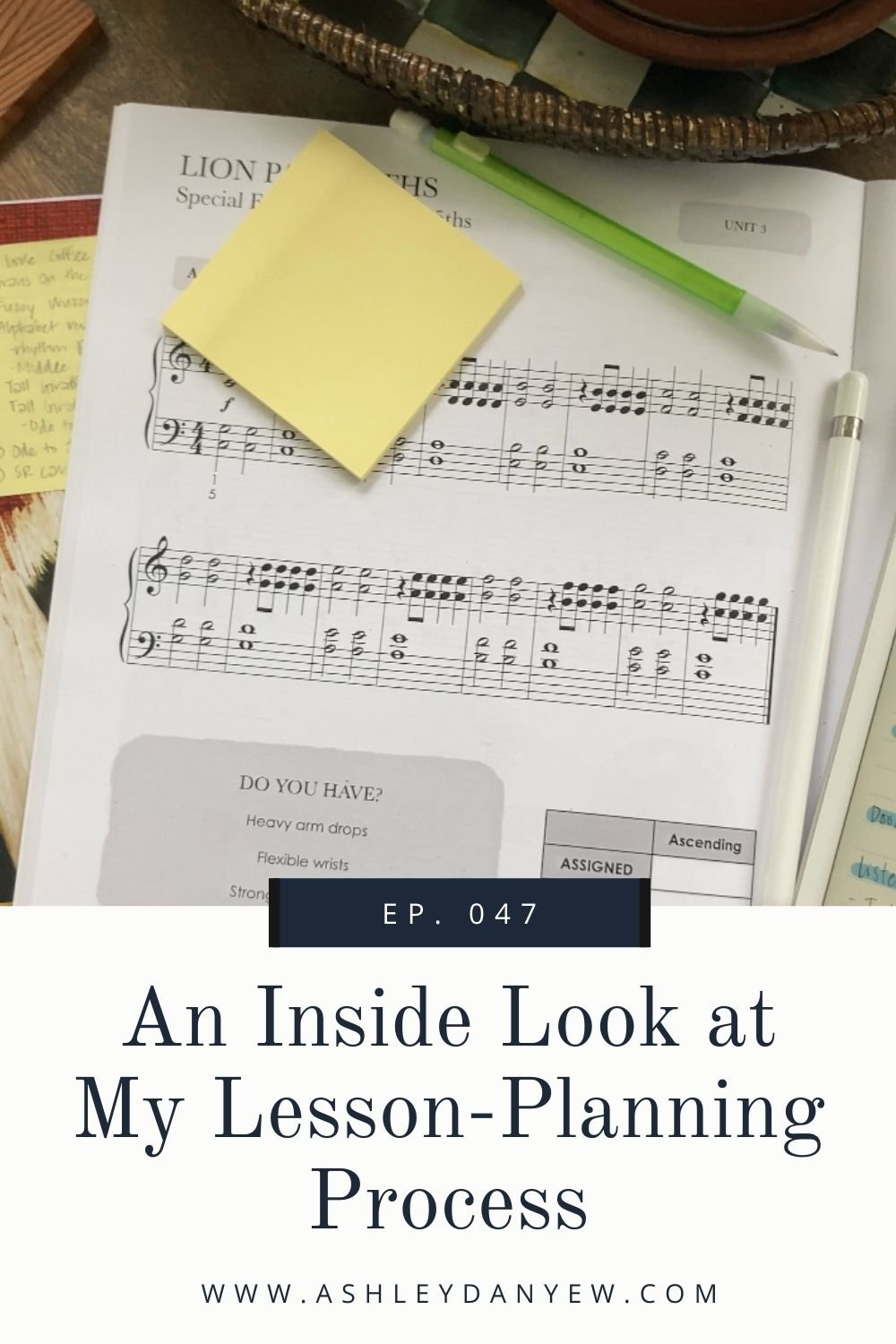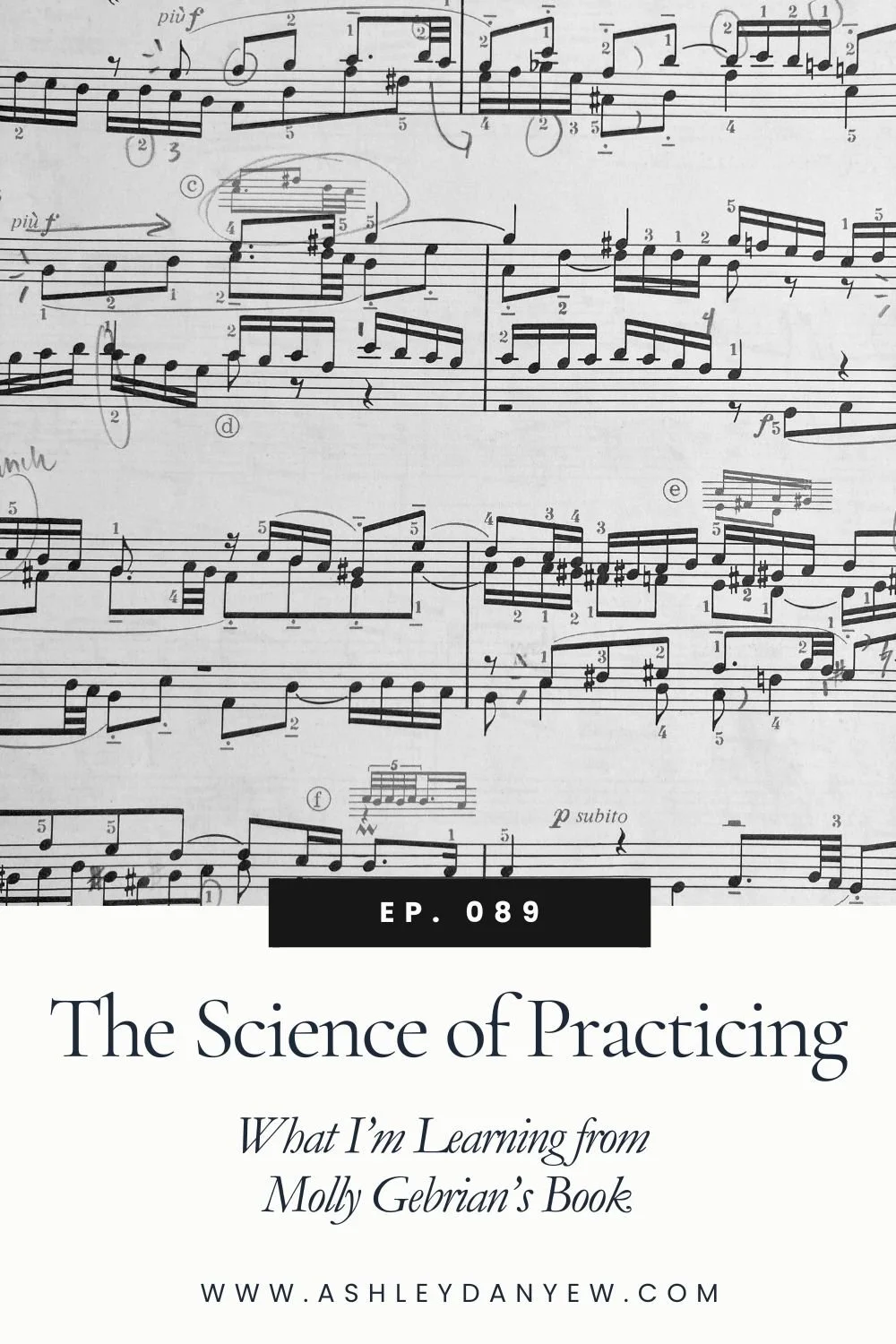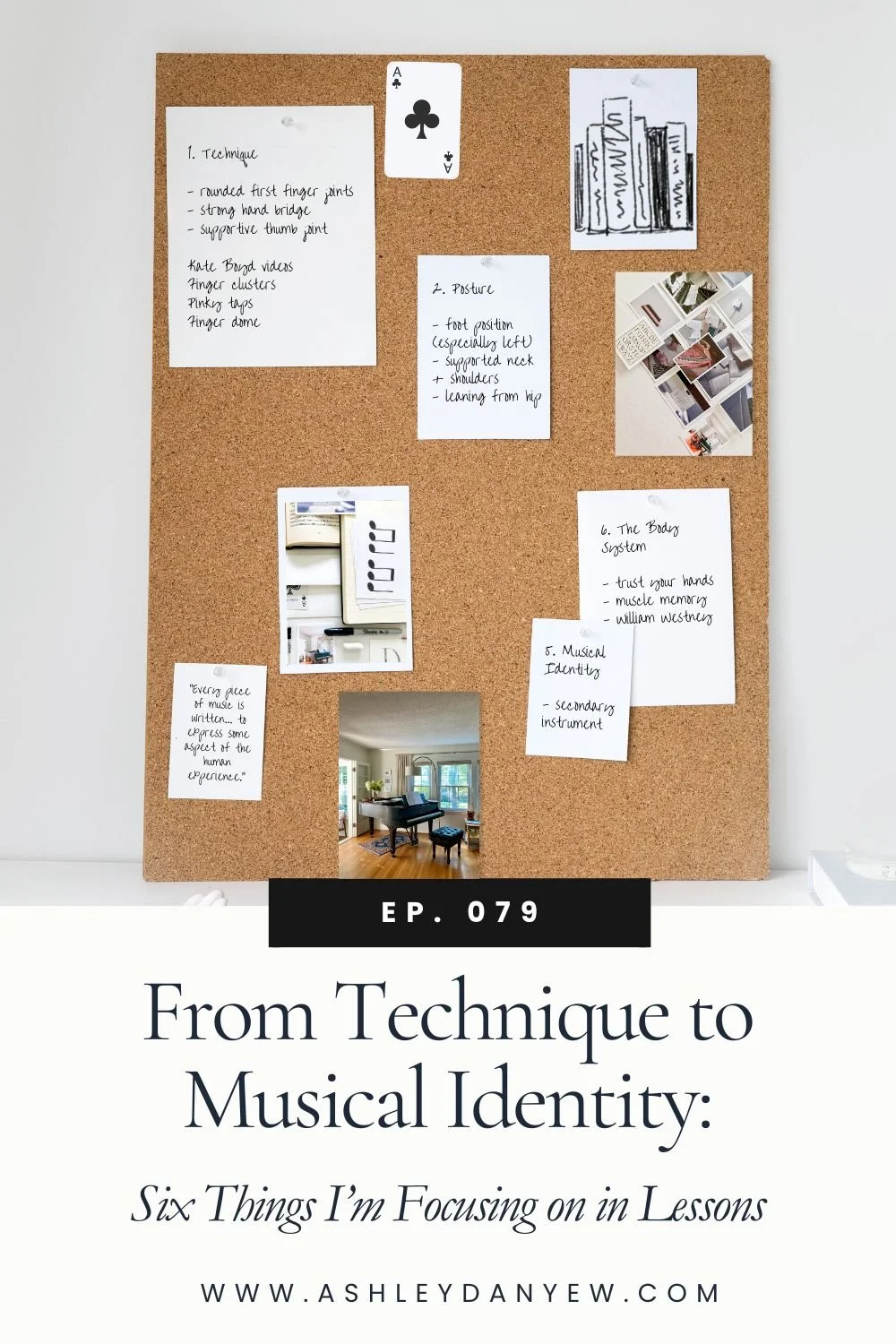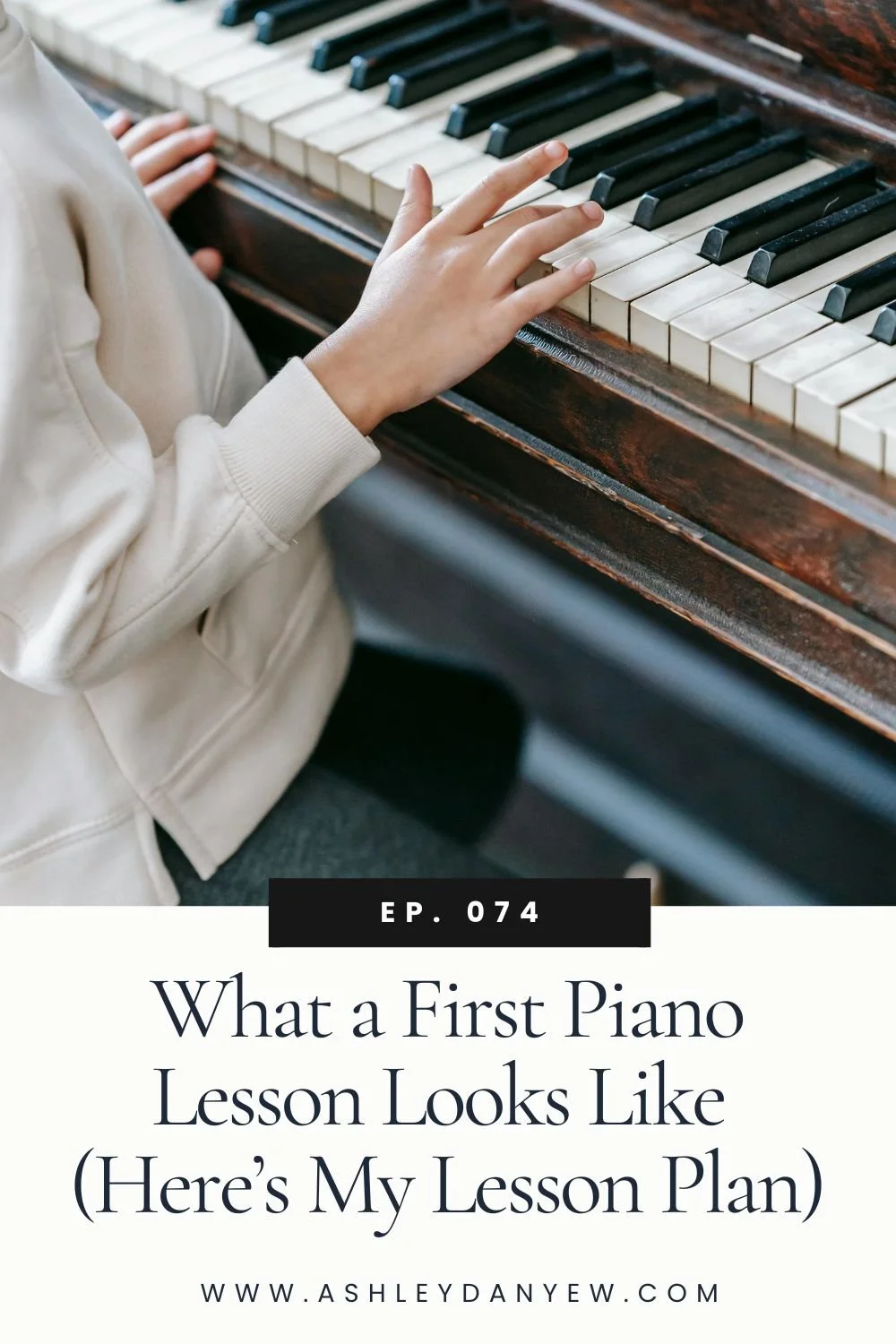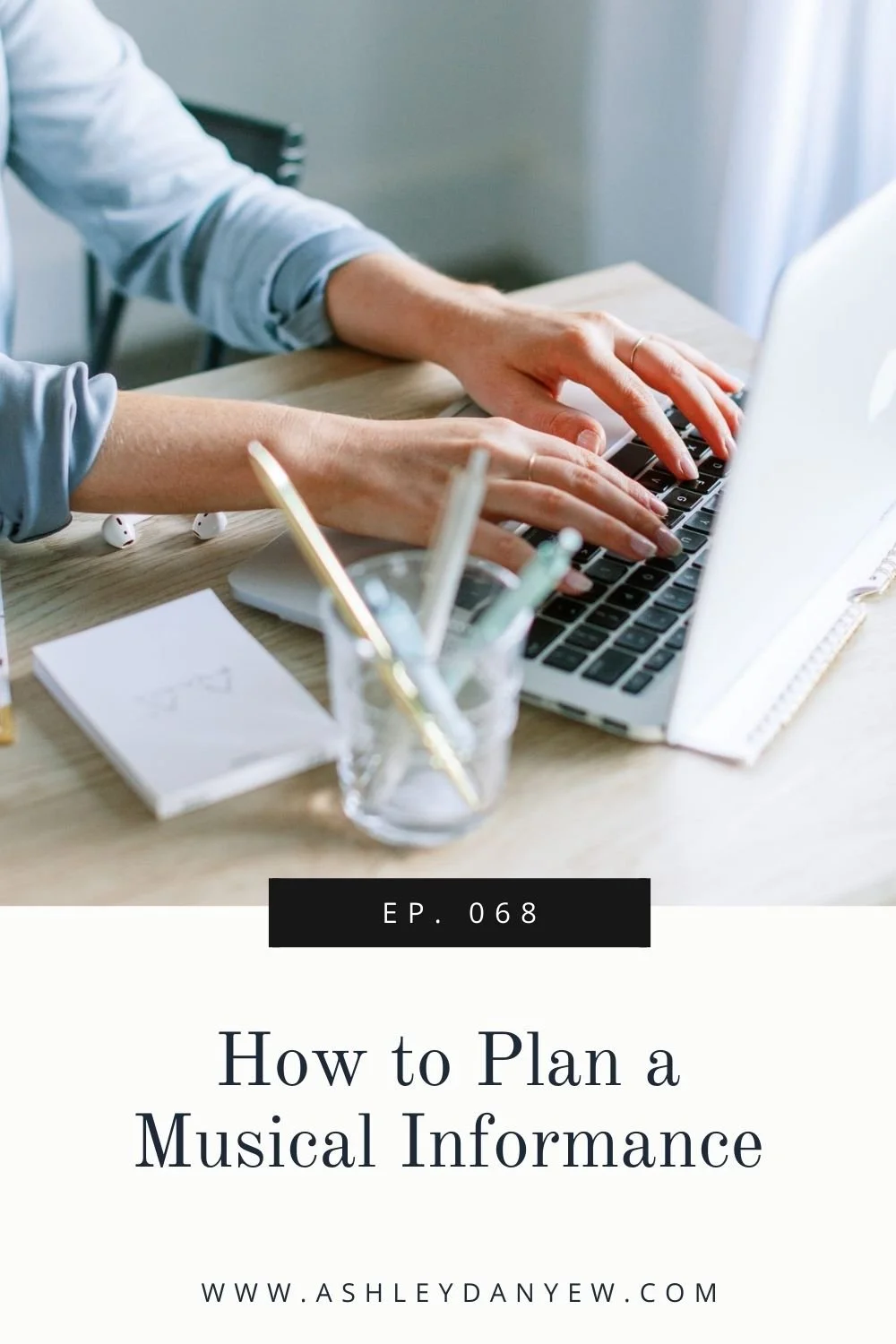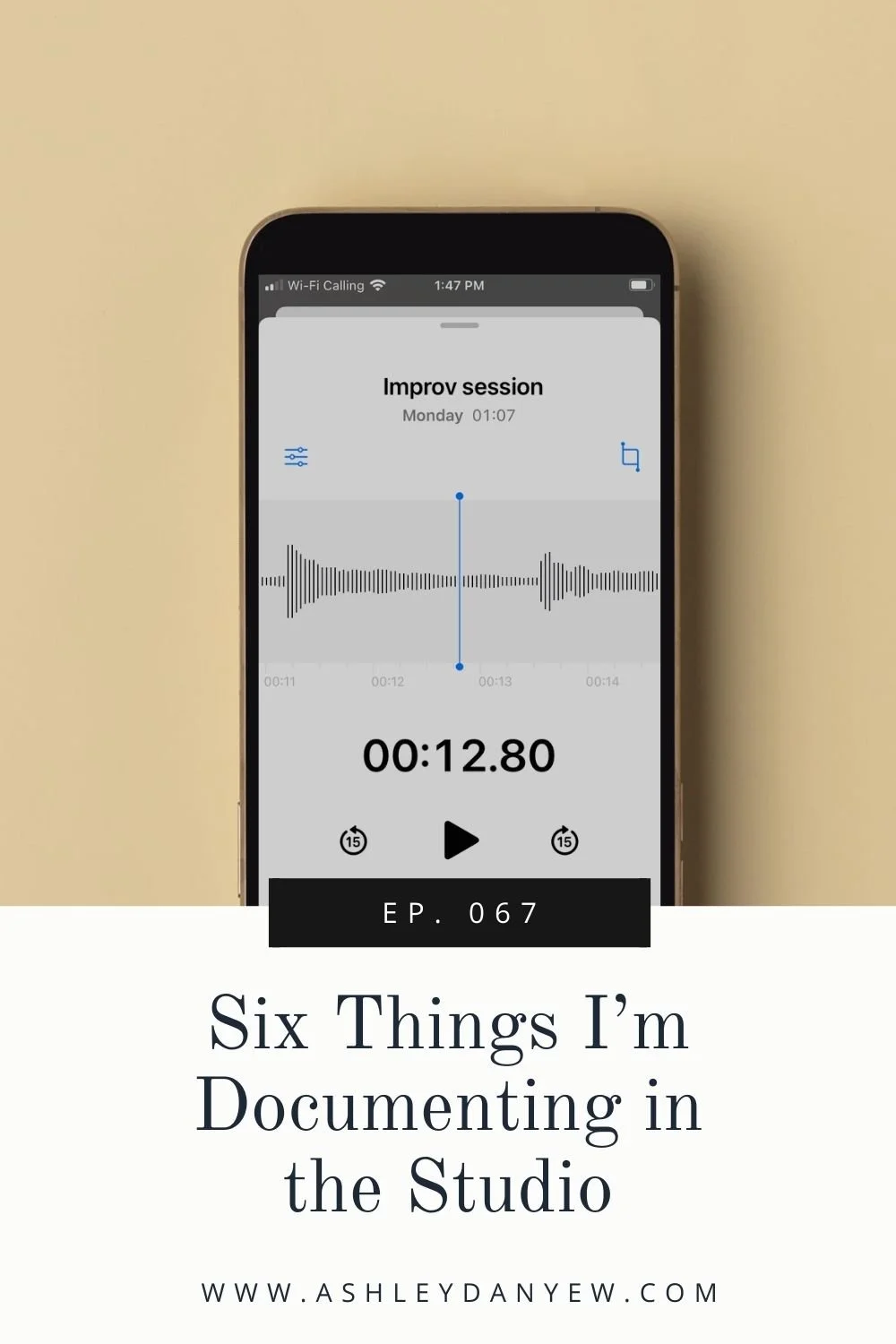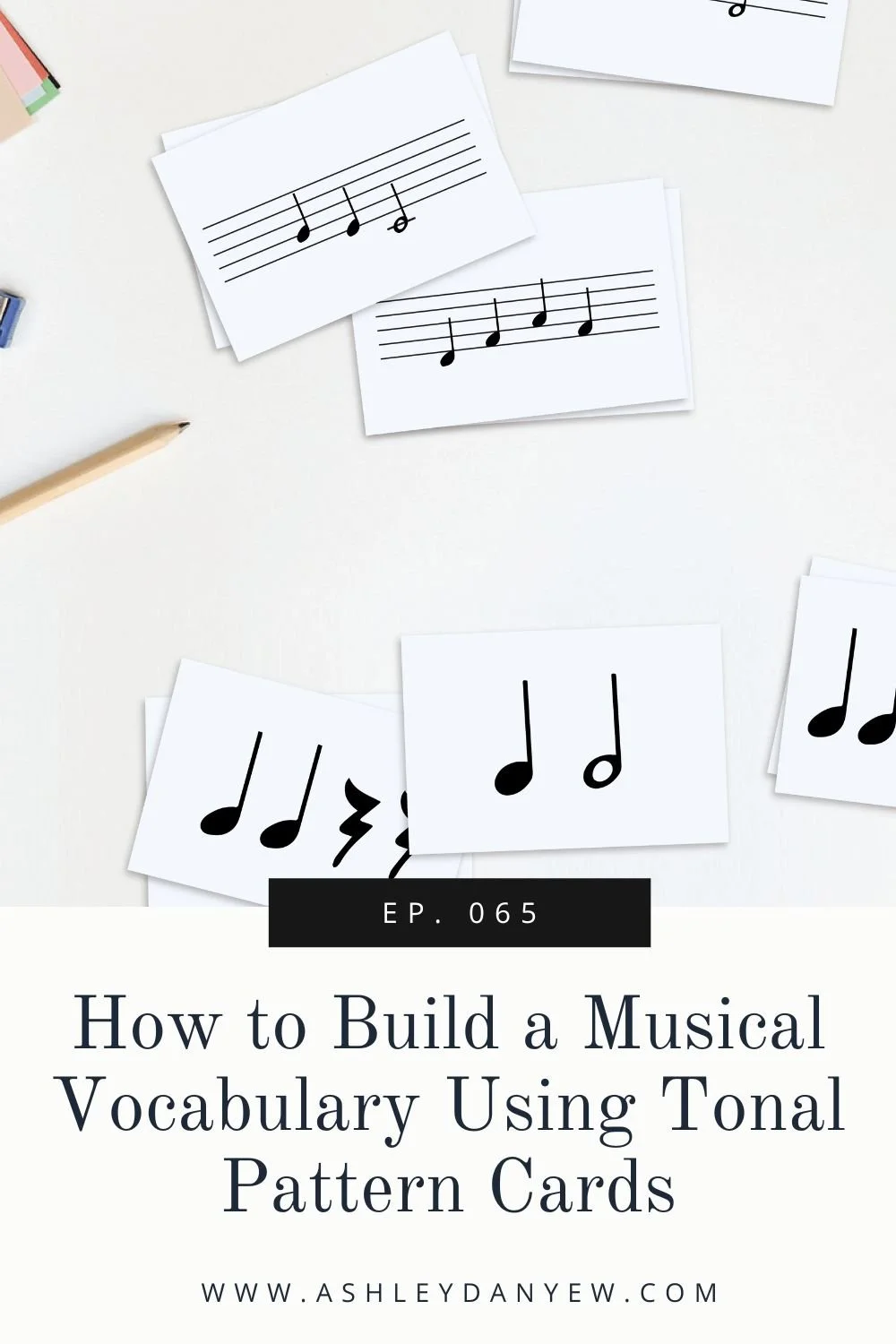Resources Mentioned
*Disclosure: I get commissions for purchases made through links in this post.
Do you pre-plan lessons in your studio? A few weeks ago, I shared a quick behind-the-scenes video of my lesson planning process. I did a poll on Instagram to see how many other teachers pre-plan lessons for their students: 38% said yes and 62% said sometimes.
The truth is, I haven't always pre-planned lessons.
As a young teacher, I loved planning and sequencing activities for every individual lesson, but it was challenging to predict what we'd realistically get through and so much was dependent on a student's preparation and practicing during the week. Would they be ready to begin this new piece or would we need to spend another week reviewing concepts in a review piece?
I began making quick lesson sketches when a student would hand me their lesson notebook and pre-planning other activities to reinforce rhythm, aural skills, and technique. But these activities were often more general, more level-specific than student-specific, and they weren't tied to the student's repertoire.
When the pandemic happened, I found myself without my students' notebooks to reference, so I started writing digital assignment sheets.
I've written about this on my blog — I'll include a link to the specific post in the show notes -- but this process of writing digital assignment sheets has changed my teaching approach.
I use Notability, my iPad, and an Apple Pencil. This way, I can write music notation (which is great for rhythm patterns I want a student to review, a warm-up pattern, or a creativity assignment). I also sometimes draw in iconic notation to help a young student remember the patterns of a new piece.
Now, I have a copy of my student's assignments to reference after their lesson and before I see them next week. Sometimes, I even add notes to myself for the following week (a reminder to review intervals or the next step in preparing a new rhythmic concept).
I feel prepared going into lessons but also that our time together is more intentional. I know what I want to prepare, introduce, or reinforce. Amy Glennon of the New School for Music Study says, "We enter the lesson that is well-planned with confidence and a sense of purpose and we're much more likely to be effective and inspirational to our students."
Today, I'm sharing my lesson-planning workflow: the steps I take every day before teaching to plan individual lessons for my students. Plus, at the end, I'll answer a few questions I received on Instagram that are related to this topic.
“We enter the lesson that is well-planned with confidence and a sense of purpose and we’re much more likely to be effective and inspirational to our students.”
How I Plan Individual Piano Lessons Each Week
It's Monday afternoon and I'm sitting down with my laptop, my iPad, a stack of books, and a hot cup of coffee to plan lessons. Today, I have five students: two beginners, one late elementary, and two early intermediate students.
I usually start at the end of the day and work backward, for no particular reason other than my first lessons tend to be with my beginning students and there are more activities to sequence. It helps to have this fresh in my mind.
I open each student's most recent assignment sheet in Notability.
This year, I created a folder for each student so I can organize their assignment sheet file, theory activities I've digitized from the Music Tree series (I talked about this in Episode 039), assessment materials, and other notes.
I duplicate last week's assignment and erase my notes, leaving only the titles of their pieces, warm-ups, and sight-reading assignment.
Repertoire
Next, I evaluate repertoire.
How many pieces are on the assignment? Are any close to completion? What do I want to assign next?
I review the table of contents for my student's method book to get a big picture of the concepts that are being taught. Sometimes for my early intermediate students, I'll substitute a more challenging piece that uses the same concept (things like 3/8 or 6/8 meter, broken octaves, the key of D minor, etc.).
Looking ahead at repertoire I plan to introduce in a week or two gives me the opportunity to plan preparatory activities. Is there a new concept I can prepare this week? Perhaps a new rhythm pattern, pedaling, a finger pattern, scale line, wrist rotation, or a gesture like 2-note slurs.
Warm-Ups
Next, I evaluate the student's warm-up exercise. I make a list at the beginning of the year of technical goals for each student (based on the RCM Piano Syllabus) so I can track what we've worked on, what keys we've learned, etc. For most students, this includes rotation exercises, parallel and contrary motion scales, blocked and broken chords, chromatic scales, and cross-hand arpeggios. For my younger students, I often pull technic exercises from the Music Tree books even if they use another method.
If the student can perform last week's warm-up assignment with confidence, what will I assign next?
Activities
Finally, I make a list for myself on the side of the page with activities I want to include in the lesson: a sight-reading card for my younger students, interval review, a theory activity, or an aural skills activity like clapbacks or playbacks.
Using Written Assignment Sheets in Lessons
Now, in terms of using this in lessons:
For my late elementary and intermediate students, I reference this assignment sheet outline and the notes I've written to myself on the side of the page in lessons. We spend more time on each piece at this level, but I try to get through as many repertoire pieces as we can, warm-ups, and sight-reading in every lesson.
For my beginning and younger elementary students, there are so many activities that I add to the lessons that I don't write on the assignment sheet, that I find it helpful to make a short, bulleted list on a Post-It note. I find I can get through 8-9 activities in most 30-minute lessons and having this list of activities sequenced in advance and written on something small like a Post-It means I can stick it on the piano and quickly glance at it as needed to keep the lesson flowing.
What Other Teachers Have Asked About Lesson-Planning
I received a few questions from my Instagram followers about lesson planning that I want to address:
How do you keep track of what each student was working on last week?
This is the magic of digital assignment sheets.
Rather than relying on my students to bring their lesson notebooks each week, I have a copy of all of their assignment sheets on my iPad. This not only helps me plan for the coming lesson, but I can track what technic exercises they've worked on this year, how long we've had a certain piece on the assignment, etc.
What type of practice guide/assignment sheet do you use for your students to take home?
I email or text a copy of the assignment sheet I write in Notability to my students or their parents at the end of their lesson. So I go in with that outline and then as we work through each part of the assignment, I'm erasing or adding things, making a couple of notes about practice steps or things to focus on, and by the end of the lesson, the assignment sheet is fully written.
I find this helps keep parents in the loop on what we're working on and gives them a role to play in their child's practicing (they are responsible for printing the assignment sheet and putting it on the piano!). It's also helpful for my older students to have a copy they can reference on their phones while practicing.
I limit my assignment sheets to just one page and I follow the same basic outline for students at all levels. The assignment sheet always has the same structure:
Warm-ups
Sight-reading and rhythm assignment (most of my students use the Sight-Reading and Rhythm Every Day series by Helen Marlais).
Repertoire (usually categorized by book)
2-3 comments or practice steps for each piece
For my younger students, I also include a weekly creativity prompt and a listening assignment. Occasionally I include this for my older students, especially when starting a new piece outside a method book or when we're working on a creative project like the blues composition project, which I talked about in Episode 045.
How do you pick repertoire for each student?
Right now, I spend time at the end of the school year and over the summer planning repertoire for the following year, so I am fully immersed in that process as we speak. I keep a repertoire list for each student, including a record of all the books they're currently using and which pieces they've learned.
For my elementary and intermediate students, I use the levels outlined in the RCM Piano Syllabus and Jane Magrath's book, Piano Literature for Teaching and Performance. For my beginners, I rely mostly on their method book, with some rote pieces added in as supplements throughout the year.
This leveling also helps me plan technique and musicianship goals, too, which I keep in a separate document to use as an assessment throughout the year. I like being able to track that my students are developing comprehensive musicianship skills through technique, sight-reading, rhythm, aural skills, and yes, repertoire.
When creating late elementary and intermediate repertoire plans, I start with the books they have and jot down a few pieces I want to assign. Then I try to make sure (especially for my intermediate students) that the pieces are balanced in terms of a) style, b) composer diversity, c) style periods, and things like that. Some are from new books I want my students to purchase, some I will plan to teach by rote, and some are in the public domain.
For my late elementary and intermediate students, I also like to plan a few studies, etudes, or inventions to assign throughout the year.
I find it helpful to have a list of pieces that are level-appropriate for each student that I can reference during the year to not only ensure the assignment sheet is balanced but that my students are on track and progressing at an appropriate pace.
I've discovered recently that method book pieces often jump around in terms of level and even though it seems like starting at the beginning and working your way through would mean that you're starting with easier pieces and working to more challenging pieces, that's not always the case when you actually analyze the repertoire that's included. So I'm trying to be a little bit more mindful of that.
I’d love to hear from you:
I hope this is helpful to you as you develop a lesson-planning workflow for your studio. If you have any questions or comments feel free to leave a comment on the blog or reach out to me on Instagram. I'd love to hear from you!


